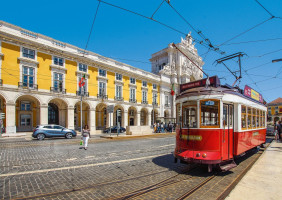Centro Storico Travel Guide
Centro Storico, known as the historic center, is the heart of many Italian cities, including Rome and Florence. Steeped in history, this area is famous for its ancient architecture, charming cobblestone streets, and vibrant cultural scene. Visitors can explore iconic landmarks, such as the Colosseum and the Pantheon, while immersing themselves in the rich heritage of Italy.Top Attractions in Centro Storico
- Colosseum
- Pantheon
- Trevi Fountain
- Spanish Steps
- Roman Forum
Centro Storico is Famous for
Its historical significance and architectural marvels make Centro Storico a must-visit destination for history buffs and culture enthusiasts.Top Attractions in Centro Storico
- Exploring ancient ruins
- Indulging in authentic Italian cuisine
- Shopping in quaint boutiques
- Admiring Renaissance art
- Soaking in the lively atmosphere of piazzas
What's Great about Travelling to Centro Storico?
- Immersing in rich history
- Experiencing authentic Italian culture
- Enjoying world-class art and architecture
- Savoring delicious Italian cuisine
What's Not So Great about Travelling Centro Storico?
- Can be crowded with tourists
- Narrow streets may be challenging for some travelers
- Prices can be higher in tourist areas
- Language barrier for non-Italian speakers
Travel Tips for Centro Storico
- Check visa requirements before traveling
- Use public transportation or walk to avoid traffic
- Be wary of pickpockets in crowded areas
- Respect local customs and traditions
Important Centro Storico trip information
- Ideal Duration: Spend at least 3-4 days to fully explore the area.
- Best Time to Visit: Spring and fall offer pleasant weather and fewer crowds.
- Nearby Airports and Railway Stations: Fiumicino Airport and Termini Station are convenient options.
Per Person
1,09,989
*EXCLUDING APPLICABLE TAXES 5.0 Ratings
( 393 Reviews )
( 393 Reviews )
Per Person
60,518
*EXCLUDING APPLICABLE TAXES 5.0 Ratings
( 393 Reviews )
( 393 Reviews )
FAQ's on Centro Storico
Q1: What is the best time to visit Centro Storico?
The best time to visit Centro Storico is during the spring and fall months when the weather is mild, and the city is less crowded. Spring (April to June) and fall (September to November) offer pleasant temperatures for exploring the historic streets and landmarks without the summer tourist crowds. Additionally, various festivals and events take place during these seasons, adding to the vibrant atmosphere of Centro Storico.
Q2: Do I need a visa to travel to Centro Storico?
Most visitors to Centro Storico do not require a visa for short stays. However, it is essential to check visa requirements based on your nationality before traveling. EU citizens typically do not need a visa, but travelers from other countries may need to obtain a Schengen visa. Make sure to have a valid passport with at least six months validity beyond your intended stay.
Q3: What are the must-visit attractions in Centro Storico?
Centro Storico is home to iconic landmarks such as the Colosseum, Roman Forum, and Pantheon. Visitors should also explore the Vatican City, St. Peter's Basilica, and the Trevi Fountain. Don't miss the charming streets of Trastevere and the Spanish Steps for a taste of local life. Art enthusiasts will appreciate the masterpieces at the Galleria Borghese and the Vatican Museums.
Q4: Is Centro Storico a safe place to travel?
Centro Storico is generally safe for tourists, but like any major city, it is essential to stay vigilant against pickpocketing and petty crimes, especially in crowded areas. Avoid poorly lit streets at night and be cautious of your belongings in tourist hotspots. It's advisable to keep important documents and valuables secure in your accommodation.
Q5: What is the local currency in Centro Storico and can I use credit cards?
The local currency in Centro Storico is the Euro (€). ATMs are widely available throughout the city for cash withdrawals, and major credit cards are accepted in most hotels, restaurants, and shops. Notify your bank of your travel plans to avoid any issues with card transactions. It's also recommended to carry some cash for smaller purchases and street vendors.
Q6: What is the local cuisine like in Centro Storico?
Centro Storico offers a delightful culinary experience with traditional Italian dishes like pasta carbonara, pizza Margherita, and gelato. Explore local trattorias and osterias for authentic Roman cuisine, including dishes like cacio e pepe (cheese and pepper pasta) and supplì (fried rice balls). Indulge in espresso at charming cafes and savor the flavors of fresh produce and regional ingredients.
Q7: What transportation options are available in Centro Storico?
Transportation in Centro Storico includes an efficient metro system, buses, trams, and taxis for getting around the city. Walking is also a popular way to explore the historic center, with many attractions within walking distance of each other. For longer distances or day trips, consider renting a car or joining guided tours to nearby destinations like Pompeii or Tivoli.
Q8: Are there any cultural norms or etiquette I should be aware of when visiting Centro Storico?
When visiting Centro Storico, it's essential to respect local customs and traditions. Dress modestly when visiting religious sites like churches and the Vatican. Italians value politeness and may greet each other with a handshake or kiss on the cheek. Avoid discussing sensitive topics like politics or religion unless initiated by locals. When dining out, it's customary to linger over meals and ask for the check when ready to leave. and immerse yourself in the rich culture and history of this captivating destination.
Q9: I am a travel agent. How can I buy travel leads of Centro Storico?
Register yourself as a travel agent at agents.tripclap.com and then you can buy travel leads to Centro Storico once your account is approved. For more details contact our support team at +91-8069186564 or support@tripclap.com


